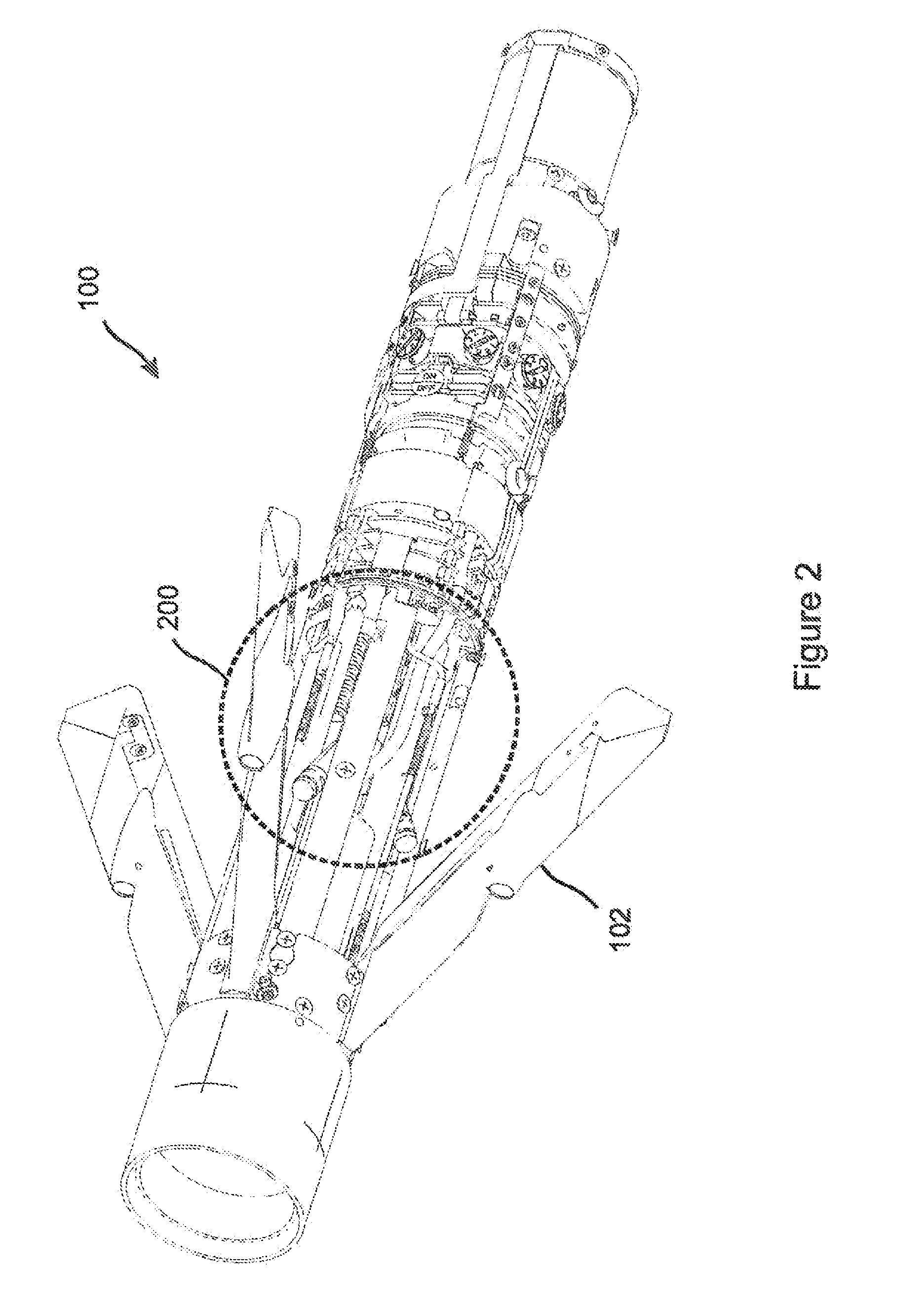Torsion spring wing deployment initiator
a technology of spring wing and initiator, which is applied in the direction of direction controllers, instruments, weapons, etc., can solve the problems of guidance system failure, limited speed of missile spin, and insufficient centripetal energy by itself to enable the wings
- Summary
- Abstract
- Description
- Claims
- Application Information
AI Technical Summary
Benefits of technology
Problems solved by technology
Method used
Image
Examples
Embodiment Construction
[0037]The present invention is a wing deployment initiating mechanism which provides added wing deployment force during the initial deployment of guidance wings on folded wing missiles and rockets, so as to augment the centrifugal wing deployment force during the initial phase of wing deployment and ensure that the wings are able to break through frangible seals which cover the wing deployment slots. After bursting through the seals, the wings are fully deployed by the centrifugal force which arises from the spinning of the missile in flight.
[0038]With reference to FIG. 1, some aerial rockets and missiles 100 include guidance wings 102 which are typically folded within the main fuselage 104 in a stowed configuration until the weapon is launched, at which point the wings 102 are released and deployed through wing slots 106. One example is the Advanced Precision Kill Weapon System (APKWS) laser guided missile 100. FIG. 1 illustrates an APKWS 100 having just been launched from a helico...
PUM
 Login to View More
Login to View More Abstract
Description
Claims
Application Information
 Login to View More
Login to View More - R&D
- Intellectual Property
- Life Sciences
- Materials
- Tech Scout
- Unparalleled Data Quality
- Higher Quality Content
- 60% Fewer Hallucinations
Browse by: Latest US Patents, China's latest patents, Technical Efficacy Thesaurus, Application Domain, Technology Topic, Popular Technical Reports.
© 2025 PatSnap. All rights reserved.Legal|Privacy policy|Modern Slavery Act Transparency Statement|Sitemap|About US| Contact US: help@patsnap.com



